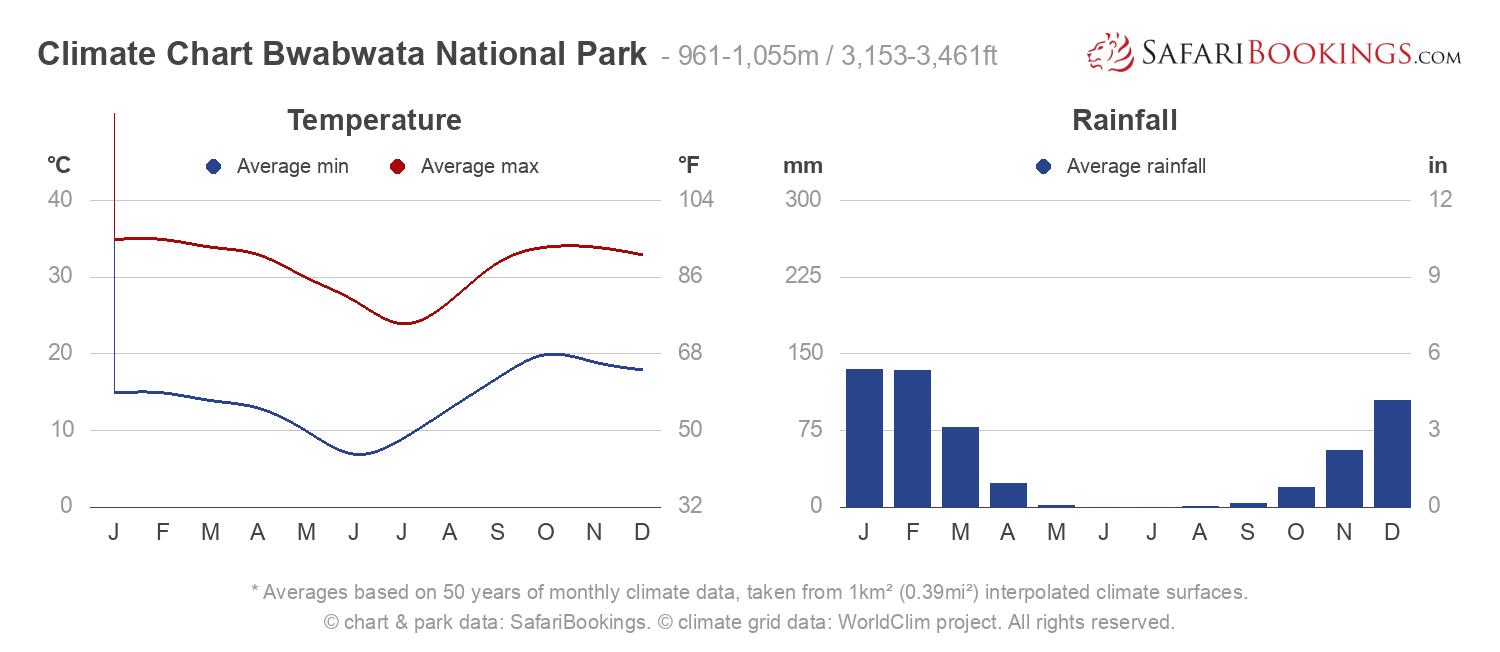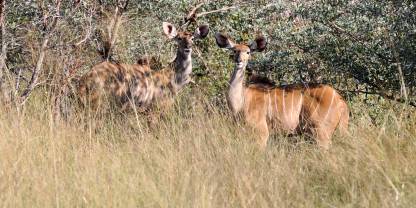
Climate Chart Bwabwata National Park – 900-1,100m / 2,953-3,609ft
The climate in Bwabwata National Park is generally quite hot. Rain comes by way of intense thunderstorms during summer (November to April), which is the Wet season. The Dry season (May to October) is characterized by no rain at all, although the rains can begin in the second half of October.
Dry Season May to October – Winter
During the Dry season there is an absence of rain and temperatures are cooler.
- May, June, July & August – This is a time of dry conditions, cool temperatures and abundant sunshine. Temperatures average 27°C/81°F most afternoons. Early mornings are cold with temperatures hovering around 10°C/50°F. in open vehicles require warm, windproof clothing.
- September & October – Temperatures increase. October averages 34°C/93°F and peak temperatures can be much higher, making it one of the year’s hottest months. Early mornings are warmer, reaching around 20°C/68°F. Rains generally start toward the end of October or in early November.
Wet Season November to April – Summer
With the heat of summer comes the Wet season, which actually doesn’t produce much rain. Afternoon thunderstorms occur sporadically and it is primarily sunny and hot. Early mornings are characterized by warmer temperatures, averaging about 16°C/60°F.
- November & December – November is generally the first month of rain, with precipitation really picking up in December. Although it is fairly dry for the most part, an occasional thundershower can happen. Afternoon temperatures are around 34°C/93°F.
- January, February & March – The wettest months are typically January and February, although even during these months it remains mostly sunny with afternoon thundershowers. Daytime temperatures average 35°C/95°F.
- April – April is marked by a drop-off in rain and lower temperatures. The last rains usually occur during the first half of the month.

